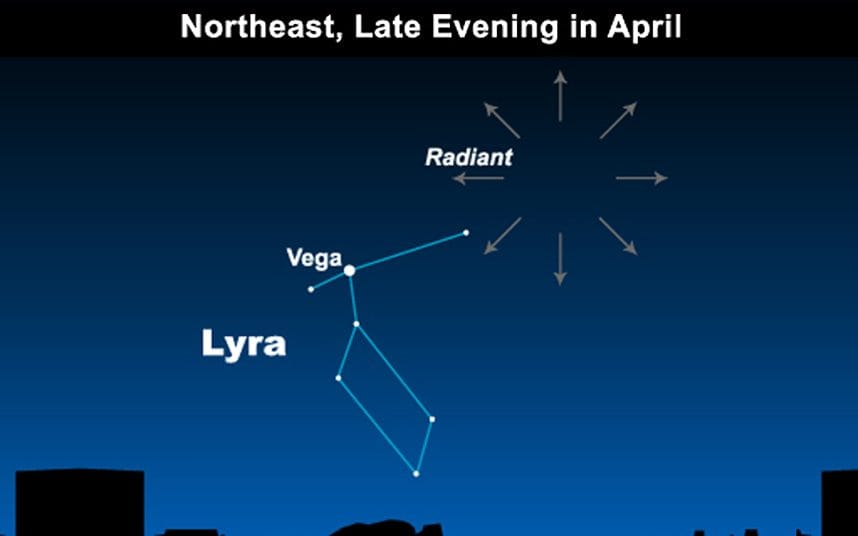Lyrid meteor shower 2017: When can stargazers see the annual show?

When is the Lyrid meteor shower?
A meteor shower happens when a number of meteors flash across the sky from roughly the same point.
The annual Lyrid meteor shower takes places annually between April 16 and April 25. In 2017, it will peak on the morning of April 22, with the greatest number of meteors falling during the few hours before dawn.
With no moon, stargazers might be able to see between 10 and 20 Lyrid meteors per hour at the shower's peak.
The worlds best stargazing locations
Where can I see the shower?
A dark night is best for a meteor shower after midnight and before dawn.
Head somewhere away from the bright lights into more rural areas if you can and be prepared to wait a good hour if you want the best chance of seeing a shower. Look for a wide open viewing area - perhaps a national park or large field on the side of a road and make sure you concentrate your gaze towards the east.
Meteor showers are unpredictable though, so prepare for the fact you might not see much.

Lyrid meteors are typically as bright as the stars in the Big Dipper, but some are much more intense, even brighter than Venus, the brightest object in the night sky after the moon.
These "Lyrid fireballs" cast shadows for a split second and leave behind smokey debris trails that linger for minutes.
What causes the Lyrid meteor shower?
The ionised gas in the meteors' trail burns up as it enters the Earth's atmosphere which creates the glow which can be seen streaking across the night sky. Meteors are sometimes called shooting stars, although they've got nothing to do with stars.
This is what I did on #EarthDay 2015. #lyridmeteorshower#astrophotographypic.twitter.com/2pERzU4zCm
— Scott MacNeill (@scottiemacneill) April 22, 2016
The shower occurs as the Earth passes through the dust left over from Comet Thatcher (C/186 G1), which makes a full orbit of the sun once every 415 years (which is why there are no photographs of it).
Flakes of comet dust, most no bigger than grains of sand, strike Earth's atmosphere traveling 49 km/s (110,000 mph) and disintegrate as streaks of light.
Comet Thatcher last visited the inner solar system in 1861 - before the widespread use of photography - and isn’t expected to return until the year 2276.
Why is the Lyrid meteor shower so called?
The shower radiates out from the direction of the star Vega, the brightest light in the constellation Lyra the Harp, from which it takes its name.
Vega is a brilliant blue-white star about three times wider than our Sun and 25 light years away.

You might remember Vega being mentioned in Carl Sagan's movie Contact. It was the source of alien radio transmissions to Earth.
When were the Lyrids first observed and recorded?
The earliest sightings of the Lyrid meteor shower go back 2,700 years and are among the oldest of known meteor showers.
In the year 687 BC the ancient Chinese observed the meteors and recorded them in the ancient Zuo Zhan chronicles saying:
"On the 4th month in the summer in the year of xīn-mǎo (of year 7 of King Zhuang of Lu), at night, (the sky is so bright that some) fixed stars become invisible (because of the meteor shower); at midnight, stars fell like rain
That era of Chinese history corresponds with what is now called the Spring and Autumn Period (about 771 to 476 BC).
Tradition associates this period with the Chinese teacher and philosopher Confucius, one of the first to espouse the principle: “Do not do to others what you do not want done to yourself.”
American observers saw an outburst of nearly 100 Lyrid meteors per hour in 1982. Around 100 meteors per hour were seen in Greece in 1922 and from Japan in 1945.
At a glance | Will an asteroid strike ever destroy Earth?

 Yahoo News
Yahoo News 
